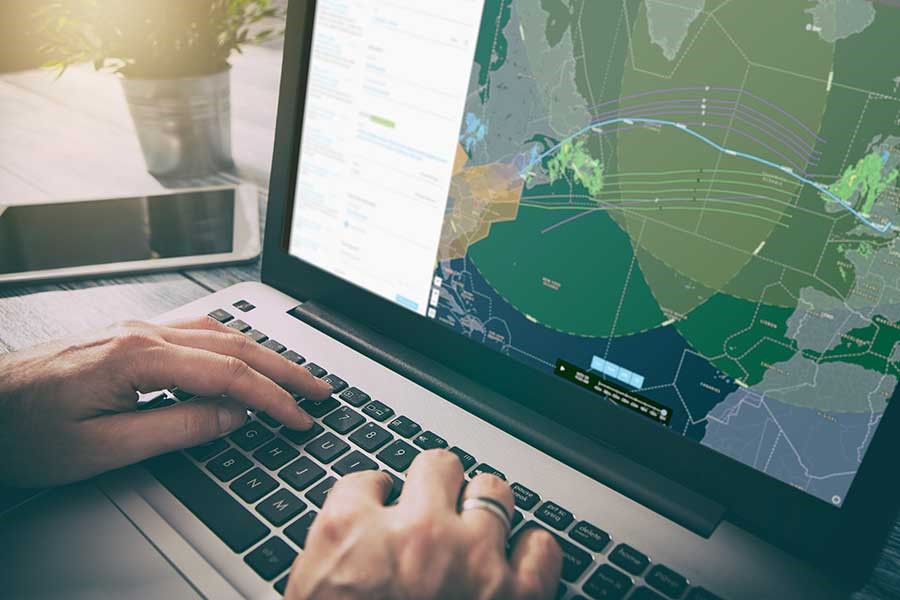Why Pay for Flight Planning? 5 Reasons: Many pilots and corporate flight departments wonder why they should pay for a premium flight planning provider when low-cost and no-cost options exist in the market today. That question is not only a valid question but one that needs to be answered satisfactorily before you make the leap from free service to a premium service. Here are some of the reasons premium flight planning providers may be worth the additional spend.
1. Economics
Most of the low-cost options do a good job of displaying the routes recently flown between two city pairs. However, those may not be the optimal routes regarding time and fuel. Most premium flight planning providers use complex proprietary algorithms to maximize time and fuel savings; most of the low-cost services do not. This optimization may sound like an unnecessary option until you start to see just how much time and fuel the optimal routes save. The average flight department flying a mid-size corporate aircraft 350 hours per year will see somewhere between 7.5-9% reduction in fuel consumption per annum when optimized flight planning is employed over the use of the standard route catalogues that the low-cost providers promote. Flying fuel-optimized routes for two or three weeks may be enough to pay for your annual subscription to a premium flight planning provider.
2. Generic vs Custom Data
Low-cost providers provide generic weights and equipage for the majority of the aircraft on the market today, but, they most likely aren’t the weights or equipage of your aircraft. Using generic data, at best, will produce a flight plan that is fairly accurate as compared to your actual aircraft’s performance. But, most likely, the numbers will only be mildly accurate, and when you are flying on the long side of the performance envelope of your aircraft, this inaccurate data could make for some uncomfortable situations that most pilots would prefer to handle on the ground and not at 41,000 feet.
Even worse than generic data is the fact that most low-cost providers do not actually do any performance-based flight planning. Instead, they use a simple calculation which is something along the lines of total distance divided by average speed equals time en route. Premium flight planning providers calculate the exact time it takes from lift off to top-of-climb, climbing and descending through steps, and takes into account the time of acceleration and deceleration to and from airspeed, as well as the arrival phase of the flight. Dividing distance by speed simply isn’t flight planning. At best, it’s a “rough estimate.”

Try this: The next time you are on a commercial airline, listen to what the pilot says the time of flight is in the pre-flight announcement. Then compare it to the time estimate the flight attendant reads from their cheat sheet. The difference can be quite significant, which can wreak havoc on our schedules, our confidence, and our overall experience.
3. Standardization
This might not be a major concern for the single-pilot, but when you start adding additional crew – especially additional aircraft – standardization becomes a very important concept. Most flight departments want to control data quality and adopt industry best practices (most likely through the use of Standard Operating Procedures, or SOPs). They wish to have all of their crews using the same benchmarking tools, and one of the most important is the flight planning engine. Standardization increases accuracy and promotes team collaboration and integrity while decreasing errors and subjectivity by providing crews and dispatch with the same data, regardless of their physical proximity to one another. Also, if you are flying commercially, you will most likely be required to adopt a premium flight planning provider within your Operations Specifications (Ops Specs).
If you were flying as part of a two-person crew, would you be comfortable if both of you had planned the flight using different systems?
4. User Experience
Most of the low-cost options do a good job at providing “the basics.” But, are they providing the best user experience? Is the site or the app clean, streamlined, and easy to use? Does it look as good on your phone as it does on your laptop? Is the flight plan in the format you want? Will they build you a new format exactly the way you want it? Are they using progressive technologies like high-definition mapping, cloud processing, and accelerated performance? Is the workflow of the page conducive to your workflow? Many times, low-cost providers will not be able to compete with the premium flight planning services in terms of technology and innovation, which, unfortunately, leads to decreased usability and increased frustration. And often, the low-cost providers are subsidized by advertisers and other companies who pay a fee for targeted placement of ads and promotions. Most crews aren’t interested in watching an animated graphic about the latest innovations in aviation headsets when they are busy planning an important flight.
5. Support
You arrive at the FBO, go to a computer and punch in your departure and destination. Nothing happens. What do you do now? Who do you call? How do you remedy the situation? How long is it going to take? Did they cover this in your indoctrination training? Wait…did you get training?
Most premium flight planning providers offer 24/7 support in terms of aviation and technical support. Many of the people answering the phones at these companies are licensed dispatchers, pilots, and engineers with an intrinsic knowledge of not only their system but flight planning and dispatching as a whole. You might not always need dedicated support staff, but when you find yourself needing help, having a friendly and knowledgeable person can make all the difference in the world.
In conclusion, you might not need a premium flight plan provider, but, once you find a good one, you’ll most likely figure out a way to keep it.
If you need support with your flight operations, or require premium flight planning, contact UAS





